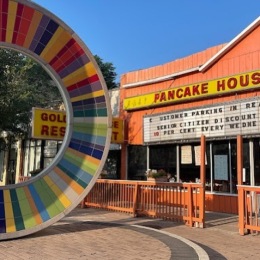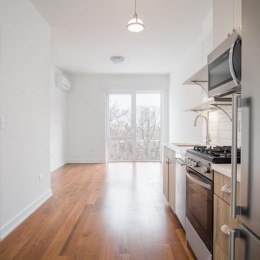Finding Your Perfect Transit-Connected Home
Public transport friendly apartments are residential properties located within walking distance of public transit options like buses, trains, and light rail. They make car-free or car-lite living possible while reducing commute times and environmental impact.
Quick Guide to Finding Public Transport Friendly Apartments:
| Feature | What to Look For |
|---|---|
| Location | Within 5-10 minute walk of transit stops |
| Transit Score | Look for scores of 70+ (Good Transit) |
| Amenities | Bike storage, package lockers, grocery proximity |
| Cost Balance | Units slightly farther from stations often cost less |
| Transit Options | Multiple routes/modes increase flexibility |
The world of apartment hunting is changing rapidly. According to recent research, proximity to public transportation has firmly established itself in the top three requirements for apartment seekers, alongside location and amenities. This shift reflects a growing preference for convenient, sustainable living that reduces dependence on cars.
"The world is changing and both younger people and downsizers feel an important aspect has to be living near public transport," notes Adrian Pozzo, a real estate development expert.
Transit-friendly apartments offer more than just convenience—they represent a lifestyle choice that can dramatically reduce commuting stress, lower transportation costs, and shrink your carbon footprint. Whether you're a young professional looking to maximize your time, someone without a vehicle, or simply wanting to live more sustainably, transit-accessible housing provides significant advantages.
These properties typically command slightly higher rents due to their prime locations, but many renters find the premium worthwhile when considering the savings on car payments, insurance, parking, and fuel. Plus, living a bit further from stations (but still within walking distance) can offer more affordable options while maintaining transit accessibility.

What Are Public Transport Friendly Apartments?
Public transport friendly apartments are more than just homes near a bus stop. They represent a thoughtful approach to urban living that puts connectivity at the heart of everyday life. These residences are typically found within a comfortable 5-10 minute walk (about a quarter to half mile) from transit stations, making car-free or car-lite living not just possible, but genuinely practical.
Urban planners often refer to these developments as "transit-oriented developments" or TODs – vibrant, mixed-use communities built around transit hubs. The concept is simple yet powerful: create living spaces where residents can easily connect to the wider city without depending on personal vehicles.
Platform Apartments in Sydney beautifully illustrates this approach. Located within 1km of Redfern train station and multiple bus routes, this development includes storage for 89 bicycles – a clear nod to the multi-modal transportation philosophy that makes these communities work.
What sets public transport friendly apartments apart isn't just location. These properties often feature:
- Thoughtfully limited parking (encouraging less car dependence)
- Secure bicycle storage facilities and repair stations
- Walkable access to daily necessities like groceries and coffee shops
- Community spaces that foster neighborhood connections
- Real-time transit information displays in common areas
The environmental impact is substantial. According to research, residents in transit-oriented developments drive approximately 45% less than those in car-dependent neighborhoods – translating to a significantly reduced carbon footprint without sacrificing mobility.
Why They Matter in Modern Cities
As our urban centers grow more congested, the value of transit-accessible housing becomes increasingly clear. Cities worldwide are struggling with traffic gridlock, air quality concerns, and the environmental toll of car-centric living.
"People spend a lot of time in traffic these days," notes real estate professional Anthony Falas. "The success of projects often hinges on being located close to good transport links."
Beyond environmental benefits, these homes offer practical advantages that improve quality of life. Rather than white-knuckling through rush hour, transit riders can use travel time productively – catching up on reading, answering emails, or simply relaxing. The financial relief is substantial too, with reduced or eliminated costs for car payments, insurance, maintenance, fuel, and parking.
For Uptown Chicago residents at The Winnie, the CTA's extensive network – including the 24-hour Red Line – creates exceptional freedom of movement throughout the city, regardless of time or weather.
Key Differences from Conventional Rentals
When you step into a public transport friendly apartment, you'll notice several distinct differences from traditional rentals.
First, the entire property is designed with multi-modal access in mind. While conventional apartments might boast about their spacious parking garages, transit-friendly buildings emphasize connections to trains, buses, bike-sharing stations, and pedestrian pathways.
Parking is typically limited by design – not as an oversight, but as an intentional choice that reflects the reduced need for personal vehicles. This shift allows developers to dedicate more space to amenities that improve community life rather than storing cars.
You'll find robust bicycle facilities that go beyond basic racks – including secure indoor storage, maintenance stations, and convenient access to bike lanes. Some forward-thinking properties even offer transit subsidies like discounted passes or ride-share credits as part of their amenity packages.
Solar engineer Charles Wang, who chose a transit-friendly apartment, summarizes the appeal perfectly: "I wanted to have something close to a train station as then it's so easy to get into the city, to the airport, and around Sydney."
This lifestyle shift – from car-dependent to transit-connected – represents not a compromise but an upgrade for many residents. With less time spent in traffic and more options for getting around, public transport friendly apartments offer a more flexible, sustainable, and often more enjoyable way to experience city living.
How to Find & Evaluate Transit-Accessible Apartments
Finding the perfect public transport friendly apartment takes a bit of detective work. While being near transit is the obvious goal, several other factors determine whether a property truly delivers on the promise of convenient access.

Finding public transport friendly apartments online
The internet has revolutionized apartment hunting, especially for transit-conscious renters. Most property listing sites now include transit-specific search filters that let you zero in on apartments near public transportation. Look for options to filter by "transit access" or properties with high Transit Scores (aim for 70+ on the 0-100 scale, which indicates "Good Transit" with multiple nearby options).
Transit maps can be your best friend during this process. Pull up your local transit authority's website to view system maps and identify neighborhoods where multiple lines converge. These transit hubs often offer the most flexibility for commuters.
While browsing listings, pay close attention to the neighborhood descriptions. Good property listings will mention nearby transit stops and walking times. Take advantage of virtual tours to get a feel for the area, and use Google Maps to simulate potential commutes from the apartment to your workplace, favorite grocery store, or other frequent destinations.
At The Winnie Apartments in Uptown Chicago, we make this research easy by providing detailed information about nearby CTA train stations and bus routes right on our website. We want you to visualize your potential commute before you even visit us.
On-the-Ground Recon & Commute Testing
Online research only tells part of the story. Before signing a lease, pull on your walking shoes and experience the commute firsthand.
Walk the actual route from the apartment to the nearest transit stops. Is the path well-lit and safe? Would you feel comfortable making this walk in the evening or early morning? Are there steep hills or obstacles that might become challenging in rain, snow, or when carrying groceries?
Time yourself during this walk—sometimes a location advertised as "near transit" actually requires a brisk 15-minute journey. That might be fine in pleasant weather but could feel much longer during Chicago winters!
The true test comes when you ride the transit option during your typical commute hours. A train that's pleasantly empty at noon might be standing-room-only at 8 AM. Check how frequently service runs throughout the day, especially if you work non-traditional hours.
As one real estate professional noted in our research, "People don't want to sit in a car for one or two hours to go to work." By testing your potential commute thoroughly, you'll know exactly what you're signing up for.
Questions to Ask Property Managers
When you're touring potential apartments, the right questions can reveal whether a property truly supports a transit-oriented lifestyle. Smart property managers at genuinely public transport friendly apartments will be ready with answers.
Ask about the percentage of residents who use public transit regularly—a high number suggests the location works well for transit users. Inquire about any transit pass discount programs, as some properties partner with transit agencies to offer residents reduced fares.
For cyclists, secure bicycle storage is non-negotiable. Ask to see these facilities during your tour. Similarly, if you're considering a car-free lifestyle, ask how residents typically handle grocery shopping and other errands.
Package acceptance services become particularly important without a car, as you may rely more heavily on deliveries. And don't forget to ask about contingency plans during transit disruptions—does the property have partnerships with ride-sharing services or other alternatives?
At The Winnie, our team can provide detailed insights about transit options in Uptown Chicago, including the nearby CTA Red Line stations and multiple bus routes that serve our neighborhood. We understand that for many of our residents, transit access isn't just a nice perk—it's an essential part of daily life.
Must-Have Features & Amenities Near Transit
Living in a public transport friendly apartment means embracing a different lifestyle than you might in car-dependent housing. When you're relying on buses, trains, and your own two feet to get around, certain amenities become not just nice-to-have, but essential parts of your daily routine.

The most coveted features in transit-accessible living spaces aren't just about luxury—they're about practicality. Secure package receiving becomes crucial when you're not driving home with your purchases. At The Winnie, we understand that deliveries are a lifeline for transit-oriented residents, which is why we've made package acceptance a priority.
Covered and secure bike storage transforms from a minor convenience to an essential amenity. Bikes often serve as the perfect transit companion, helping you bridge that "last mile" between the station and your destination. When you don't have to worry about your bicycle being stolen or damaged by weather, multi-modal commuting becomes seamless.
Laundry might seem mundane until you imagine lugging a heavy basket of clothes onto a crowded bus. That's why on-site laundry facilities or in-unit washers and dryers rank high on the must-have list for transit-friendly living. Similarly, grocery proximity takes on new importance—after a long day, the difference between a quick stop at a nearby market and a special trip with bags on public transit is significant.
Weather protection features like covered waiting areas or direct building-to-transit connections might seem like small luxuries, but they're game-changers during Chicago's notorious winters. Some newer buildings even feature digital transit displays in lobbies, showing real-time arrivals and service alerts so you never have to wonder when your bus is coming.
Community spaces and coworking areas within your building reduce the need for transportation altogether on some days. The Winnie's thoughtfully designed common areas give residents places to socialize, work, and relax without ever leaving home—perfect for those work-from-home days when you don't need to commute at all.
Pet Owners & Transit Living
The joy of pet ownership doesn't have to conflict with transit-oriented living, but it does require some extra planning. With nearly 60% of renters reporting having at least one pet in 2023, this is a consideration for many apartment hunters.
Before choosing a location, research your local transit system's pet-friendly policies. Some allow pets only during certain hours or require carriers. Chicago's CTA, for example, permits small pets in carriers, making it possible to take your furry friend to the vet without calling a rideshare.
Speaking of veterinary care, proximity to pet services becomes especially important without a car. In emergency situations, you'll want quick, direct transit access to veterinary clinics. The Winnie's Uptown Chicago location offers excellent connections to pet care services throughout the neighborhood.
Look for properties with convenient pet relief areas or nearby parks. When your morning routine includes a quick trip downstairs before catching the train, having designated spaces for your pet becomes essential. Our Uptown location provides easy access to beautiful green spaces like Montrose Dog Beach—all reachable via public transportation.
For high-rise dwellers, reliable elevator service is non-negotiable when living with pets. Those late-night walks can't wait for maintenance issues! And don't underestimate the value of pet supply delivery services when you're living car-free—having heavy bags of food delivered directly to your door is worth every penny.
Families, Students & Seniors
Transit-friendly living looks different depending on your life stage, with each demographic group having unique needs:
Families navigating public transit value stroller-friendly routes and buildings with wide doorways and elevator access. Properties near schools with good transit connections make the morning rush manageable, while ample storage space helps compensate for the lack of a car trunk. Many transit systems offer family discounts, making public transportation an economical option for households of all sizes.
Students prioritize direct routes to campus and late-night transit options for those marathon study sessions and social activities. Affordable housing along major transit corridors offers the perfect balance of convenience and budget-consciousness, while secure bike storage provides flexibility for getting around campus and beyond.
Senior residents benefit from step-free routes to transit and elevators that make daily travel manageable regardless of mobility challenges. Buildings near medical facilities with direct transit connections provide peace of mind, while community shuttles can supplement public transit for grocery trips and social outings. Neighborhoods with essential services within walking distance help maintain independence without car ownership.
As Curtis Field, a real estate professional cited in our research, notes: "Both owner-occupiers and investors now want good connectivity." This principle transcends age and lifestyle, though the specific features that make transit work for your situation may vary.
Balancing budget without sacrificing public transport friendly apartments
The convenience of public transport friendly apartments often comes with a higher price tag, but several strategies can help you maximize transit access without breaking your budget.
Consider what we call the compromise radius—the maximum distance from transit you're willing to accept. Properties just a few blocks further from stations often rent for significantly less, while still providing reasonable access. A five-minute walk versus a ten-minute walk might save you hundreds each month.
When comparing apartments, calculate your total transportation costs, not just rent. A slightly higher monthly payment might be offset by savings on car payments, insurance, maintenance, parking, and fuel. Many transit-oriented residents find they can eliminate car ownership entirely, resulting in substantial financial benefits.
Keep an eye on emerging transit areas where service improvements are planned but not yet implemented. These neighborhoods often offer better value before new lines or stations open, allowing you to get established before prices rise with improved transit access.
Trading square footage for location can be a smart compromise. A smaller unit with excellent transit connections might serve you better than a larger apartment that requires lengthy commutes. The time saved not traveling can make up for a cozier living space.
Finally, explore transit-adjacent neighborhoods—areas one or two stops away from major employment centers or popular districts. These locations often offer better value while maintaining good transit access. In Chicago, neighborhoods like Uptown provide excellent connectivity to downtown and other areas while offering more affordable options than you'd find in the Loop or River North.
At The Winnie, we've positioned ourselves perfectly in this sweet spot—providing the transit access our residents need without the premium pricing of downtown living. Our Uptown location offers the ideal balance of connectivity, comfort, and value for Chicagoans embracing a transit-oriented lifestyle.
Top Cities & Neighborhoods for Excellent Transit Access
While public transport friendly apartments can be found in many urban areas, certain cities and neighborhoods stand out for their exceptional transit connectivity. These locations combine frequent service, multiple transit options, and pedestrian-friendly design.

Chicago's Uptown: A Transit Paradise
Chicago ranks among America's best cities for public transportation, and Uptown exemplifies the benefits of transit-oriented living. The neighborhood offers exceptional connectivity that makes car-free living not just possible, but genuinely enjoyable.
Uptown residents enjoy access to multiple CTA Red Line stations including Wilson, Lawrence, and Argyle, providing frequent service to downtown and beyond. The Red Line's 24-hour service is particularly valuable, ensuring you're never stranded regardless of your schedule.
Beyond the train, an extensive bus network weaves through the neighborhood. Routes #22, #36, #78, #81, #135, #136, #146, #148, and #151 connect Uptown to destinations throughout Chicago, giving you flexible options for any journey.
What really sets Uptown apart is how these transit options complement the neighborhood's high walkability. Most daily needs can be met on foot, and when you need to venture further, the robust bike-friendly infrastructure—including dedicated lanes and easy access to the scenic Lakefront Trail—rounds out your transportation options.
The Winnie Apartments sits perfectly positioned to take advantage of all these transit benefits, making it an ideal home base for those embracing a car-light or car-free lifestyle.
Other Transit-Friendly Cities
Beyond Chicago, several other cities offer outstanding public transit options worth considering if you're hunting for public transport friendly apartments:
New York City stands as the gold standard for transit accessibility with its 24/7 subway system and extensive bus network. While Manhattan gets most of the attention, neighborhoods like Astoria in Queens and Downtown Brooklyn offer slightly more affordable options while maintaining excellent transit connections.
Portland, Oregon has transformed itself into a transit-friendly haven with its MAX light rail, streetcar, and comprehensive bus system. The Pearl District offers particularly good transit access with a distinctly Pacific Northwest urban vibe.
Seattle continues to expand its impressive Link light rail system while maintaining a robust bus network. Areas like Capitol Hill and the University District provide the perfect blend of vibrant neighborhood life and transit connectivity.
Looking internationally, Sydney's Redfern area and Melbourne's Brunswick neighborhood demonstrate how transit-oriented development is reshaping global cities. These areas show how thoughtful urban planning can create livable, connected communities centered around transit hubs.
Standout Developments & Case Studies
Several developments stand out as shining examples of transit-oriented living, offering inspiration for what's possible when housing and transportation planning work in harmony.
Platform Apartments in Sydney showcases the perfect integration of affordable housing and transit access. Located within an easy 1km walk to Redfern train station and multiple bus stops, this award-winning development (2015 UDIA Award for Best Affordable Development) includes storage for 89 bicycles, recognizing how cycling complements public transit use.
In Melbourne, Jewell Station in Brunswick represents an innovative model that thoughtfully combines residential units with community infrastructure in a heritage rail precinct. Residents enjoy direct train access to Melbourne's CBD literally steps from their front door.
Arlington Grove in Sydney's Dulwich Hill neighborhood takes integration to another level with its 246 apartments backing directly onto a light-rail stop. The development practically eliminates the "last mile" problem that often discourages transit use.
What ties these successful developments together? Strategic location near transit hubs, reduced parking provision, improved bicycle facilities, and mixed-use designs that bring everyday amenities within walking distance. As real estate professional Murray Wood simply puts it: "So people are getting on the train." This straightforward observation captures the fundamental shift toward transit-oriented living that these developments facilitate.
At The Winnie Apartments in Uptown Chicago, we're proud to be part of this global movement toward more connected, sustainable urban living. Our location puts you at the center of one of Chicago's most transit-rich neighborhoods, making car-free living not just possible, but genuinely delightful.
Common Challenges & Smart Trade-Offs
Living in a public transport friendly apartment offers incredible convenience, but like any lifestyle choice, it comes with a few trade-offs worth considering before you make your move.

Typical Challenges of Transit-Oriented Living
Let's be honest – there's no such thing as a perfect living situation. Transit-oriented apartments typically command higher rents, especially those closest to major stations. The convenience factor creates a premium that many are willing to pay, but it's something to factor into your budget planning.
Noise can also be a consideration. If you're a light sleeper, an apartment right next to the liftd train might test your patience, especially during those early morning or late-night runs. The gentle rumble of passing trains or the occasional bus announcement might become part of your daily soundtrack.
Weather exposure becomes more relevant when you're commuting without a car. That walk to the station feels very different in January than it does in June! And we've all experienced those frustrating service disruptions – whether it's planned track work or unexpected delays.
For those who regularly haul groceries or bulky items, the limited cargo capacity of transit commuting presents another challenge. And if you frequently host out-of-town visitors with cars, limited guest parking in transit-oriented buildings might require some creative solutions.
Perhaps most noticeable during your daily routine is peak-hour crowding. That morning Red Line train from Uptown to the Loop can get pretty cozy during rush hour!
Tips to Mitigate Drawbacks
The good news? With a bit of planning, most of these challenges have practical solutions.
For noise concerns, look for units facing away from transit lines or buildings with robust soundproofing. Many newer developments, knowing their proximity to transit, invest in quality windows and sound-dampening construction techniques.
If your job allows, adjusting your work schedule even by 30 minutes can transform your commute experience. Leaving before or after peak crush times might mean a seat instead of standing room only.
Smart commuters always have backup plans for transportation. At The Winnie, our Uptown location gives residents multiple options – if the Red Line is experiencing delays, several bus routes can get you downtown too.
For weather challenges, invest in quality gear that makes sense for Chicago's seasons. A good umbrella, comfortable walking shoes, and layers for unpredictable weather will make your transit lifestyle much more enjoyable year-round.
When it comes to bulky purchases, accept delivery services – most retailers now offer reasonable shipping options that eliminate the need to wrestle large items onto a bus. For those occasions when you absolutely need a vehicle, car-sharing memberships provide flexibility without the ongoing expense of car ownership.
Stay informed about potential service issues with transit alert apps from the CTA that provide real-time updates. Being the first to know about delays lets you adjust your plans before leaving home.
At The Winnie Apartments, we understand these transit-living considerations and have designed our community with them in mind. Our location provides multiple transportation options, creating built-in alternatives when services experience disruptions. Plus, our package receiving service handles deliveries while you're out, making car-free shopping easier than ever.
The transit-oriented lifestyle might require some adjustments, but most residents find the freedom from car payments, insurance, and parking hassles more than compensates for the occasional inconvenience of public transportation.
Frequently Asked Questions about Public Transport Friendly Apartments
How does transit proximity affect monthly rent and affordability?
Living close to transit stations definitely comes with a price tag. Our research shows that public transport friendly apartments within a 5-minute walk of major transit stations typically cost 10-15% more than similar units farther away. It's the classic "location, location, location" factor at work.
But before you get discouraged by higher rent figures, consider the bigger financial picture. The American Public Transportation Association estimates households can save nearly $10,000 annually by using public transit and reducing car ownership. No car payments, insurance premiums, parking fees, fuel costs, or maintenance bills can significantly offset that higher rent.
For budget-conscious renters, a smart compromise is looking just beyond the immediate station area. Apartments a 10-15 minute walk from transit (rather than 5 minutes) often offer substantial savings while still providing reasonable access. That extra few minutes of walking each day might save you hundreds in monthly rent!
Are there online tools to compare Transit Scores between neighborhoods?
Absolutely! Technology has made evaluating transit accessibility easier than ever. Several helpful tools can guide your apartment search:
Walk Score provides Transit Scores on a 0-100 scale for specific addresses and neighborhoods, with detailed information about nearby transit options. A score of 70+ indicates excellent transit service.
Transit Screen offers real-time displays of nearby transportation options, including arrival times – perfect for visualizing your daily commute options.
For data enthusiasts, AllTransit provides detailed transit performance metrics like connectivity, access to jobs, and service frequency for different neighborhoods.
Most apartment search platforms now include transit information and filtering options to narrow your search based on transit access.
And don't forget Google Maps! The "Transit" layer shows all transit lines and stations, while the directions feature estimates travel times using public transportation from any potential apartment.
These tools help you find the sweet spot between great transit access and reasonable rent prices.
What amenities matter most if I commute with pets or strollers?
Navigating public transit with four-legged friends or little ones requires thinking about specific amenities that might not matter to other commuters.
For pet parents, certain features make transit living much smoother:
Ground-floor units or reliable elevators become essential for those urgent bathroom breaks before your morning commute. Nearby pet relief areas save precious time when you're rushing to catch a train. Proximity to pet-friendly parks means your furry friend can still get proper exercise despite your car-free lifestyle. Buildings with paw-washing stations help deal with muddy trips before bringing your pet back inside. And having pet daycare services within walking distance provides peace of mind for longer workdays.
For families with strollers, different challenges require different solutions:
Elevator access and ramp entries prevent the daily struggle of carrying strollers up stairs. Wide hallways and doorways make navigating with bulky strollers less of an obstacle course. Designated stroller storage areas near building entrances mean you don't have to drag them into your apartment every time. Covered waiting areas at nearby transit stops protect little ones from harsh weather. And having family-friendly services within walking distance makes running errands with children much more manageable.
At The Winnie Apartments, we understand these unique needs. Our Uptown Chicago location offers thoughtful amenities that work for all residents, whether they have two legs, four legs, or arrive with little ones in tow.

Conclusion
The surge in popularity of public transport friendly apartments isn't just a passing trend—it represents a fundamental shift in how we view urban living. As our cities grow more congested and environmental concerns become increasingly urgent, the ability to live comfortably without constant car dependence offers both a practical solution and a refreshing lifestyle choice.
Throughout this guide, we've explored the many dimensions of transit-accessible living, from finding the perfect location to understanding the unique amenities that make car-free living not just possible, but genuinely enjoyable. We've seen how different demographics—pet owners, families, students, and seniors—each have specific needs when it comes to transit-oriented housing, and how these needs can be met with thoughtful planning.
Living in a public transport friendly apartment transforms your daily experience in meaningful ways. Your commute changes from a stressful drive to productive or relaxing transit time. The city opens up without the constant headaches of parking searches or traffic jams. Your environmental footprint shrinks significantly, with research showing transit-oriented residents drive up to 45% less than those in car-dependent neighborhoods.
The financial benefits are equally compelling. While transit-proximate apartments may command slightly higher rents, the savings from reduced or eliminated car expenses—payments, insurance, fuel, maintenance, and parking—often more than offset this premium. As one resident put it: "I wanted to have something close to a train station as then it's so easy to get into the city, to the airport, and around Sydney."
For those considering this lifestyle, The Winnie Apartments in Uptown Chicago offers an exceptional opportunity to experience transit-oriented living at its best. With multiple CTA train stations (including 24-hour Red Line service) and numerous bus routes just steps away, our residents enjoy remarkable mobility throughout Chicago without the burden of car ownership.
The community aspect of transit-friendly living shouldn't be overlooked either. These developments often foster more connected neighborhoods, with residents regularly encountering each other at transit stops, in local cafes, and in shared spaces. This natural community-building represents one of the less obvious but deeply valuable benefits of transit-oriented housing.
As cities continue evolving toward more sustainable models, public transport friendly apartments like The Winnie will increasingly represent not just an alternative housing option, but the new standard for smart urban living—where convenience, sustainability, and community naturally converge.










